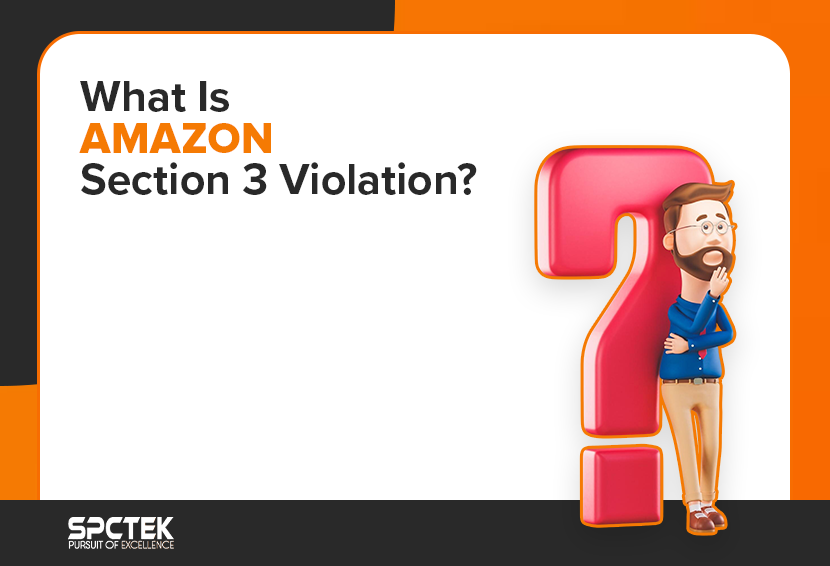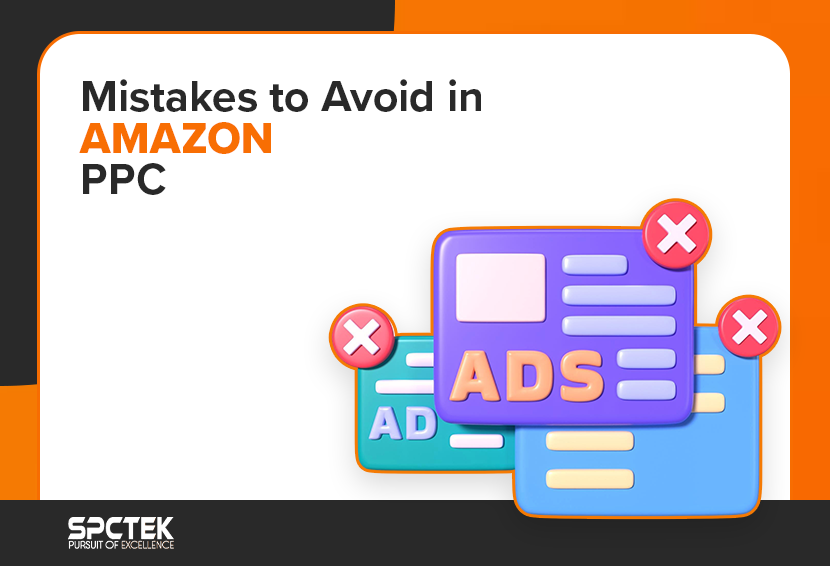In the vast world of e-commerce, Amazon has emerged as a dominant force, connecting millions of buyers and sellers worldwide. However, with great opportunity comes great responsibility, and Amazon maintains strict policies to ensure a fair and safe marketplace for all stakeholders. One such policy is “Amazon Section 3,” which sellers must comprehend thoroughly. This blog will explore what is Amazon Section 3 Violations, why is it crucial, and how sellers can avoid them to protect their businesses and maintain a thriving presence on the platform.
What is Amazon Section 3 Violations?

Amazon Section 3 is a crucial segment of Amazon’s Business Solutions Agreement that outlines the rules and guidelines that third-party sellers must adhere to while running a business on the platform. It covers various aspects, including product listings, customer interactions, order fulfillment, and overall account conduct.
Section 3 serves as the backbone of Amazon’s commitment to fostering a fair, transparent, and trustworthy marketplace. Below are the protections Amazon wants to provide to its customers and sellers.
Customer Protection
Section 3 aims to protect customers from potential harm, deception, and unsatisfactory experiences. By enforcing these rules, Amazon ensures that customers receive accurate product information, authentic goods, and timely deliveries, fostering trust and confidence in the platform.
Quality Assurance
Strict adherence to Section 3 rules helps uphold the quality of products and services offered on Amazon. By cracking down on counterfeit items, inferior materials, misleading listings, and policy breaches, Amazon maintains high standards and provides customers with a reliable shopping experience.
Fair Competition
Amazon Section 3 prevents dishonest sellers from gaining an unfair advantage over honest sellers. When all sellers adhere to the same rules, it promotes fair competition, allowing legitimate businesses to thrive on the platform.
Building Seller Trust
For sellers, complying with Amazon’s guidelines is essential for building trust with the platform. By following the rules, sellers demonstrate their commitment to ethical practices, which can lead to more opportunities, support, and growth within the Amazon ecosystem.
Strengthening Seller-Customer Relationships
By holding sellers accountable for their actions, Amazon fosters stronger relationships between sellers and customers. Positive interactions and transparent business practices contribute to customer loyalty and repeat purchases.
What Are The Common Reasons for Amazon Section 3 Violation?
Amazon’s Section 3 of the Business Solutions Agreement outlines the policies all sellers must adhere to maintain an active account. Violation of any of the below policies can result in account deactivation or suspension:

Breaching the Agreement
A critical aspect of selling on Amazon is adhering to the terms and conditions outlined in the agreement between the seller and the platform. Any violation of these agreed-upon rules can result in an Amazon Section 3 Violation, which may lead to the suspension of the seller’s account. Breaching the agreement can take various forms, and examples of such violations include listing prohibited or restricted items, engaging in deceptive product listings, or failing to meet Amazon’s fulfillment standards. Sellers must diligently understand and comply with the Agreement to avoid potential suspension.
Also Read: Why Every Amazon Seller Should Audit Their Account?
Multiple Seller Accounts
Operating multiple seller accounts without proper authorization is strictly prohibited on Amazon. Sellers are expected to conduct their business under a single account, and maintaining multiple accounts can be seen as a deceptive practice to manipulate the platform. When Amazon detects a seller with multiple accounts, it may result in an Amazon Section 3 Violation. Examples of this violation include:
- Listing the same products across different accounts to increase visibility.
- Circumventing account suspension by opening new accounts.
- Using multiple accounts to give the illusion of high demand.
Such actions undermine the fairness of the marketplace and can lead to serious consequences, including account suspension.
Deceptive, Fraudulent, or Illegal Activity
Engaging in any form of deceptive, fraudulent, or illegal activity is strictly against Amazon’s policies. Sellers are expected to conduct their business ethically and transparently, and any violation in this regard constitutes an Amazon Section 3 Violation. Examples of deceptive and fraudulent practices include:
- Generating fake reviews to boost product ratings.
- Selling counterfeit goods.
- Misrepresenting product features to mislead customers.
Moreover, selling prohibited items, such as drugs, weapons, or stolen goods, is considered illegal and violates Amazon’s policies. Amazon takes these violations seriously to ensure a safe and trustworthy marketplace for its customers.
Also Read: The Most Common Reason for Amazon Account Suspension
How to Appeal Amazon Section 3 Violation
If you’ve encountered the imposition of Section 3 on your Amazon account, there’s no need to panic. Take a deep breath, the key to overcoming this challenge lies in comprehending the reasons behind its application and the steps to reverse it.
1. Find the Root Cause of Suspension
To craft a successful plan of action for Amazon Section 3, it’s essential to identify the exact reasons that led to the imposition of Section 3. Conduct a thorough investigation into the events and circumstances that triggered the suspension. Pinpoint any mistakes, lapses, or non-compliance issues that may have contributed to the situation.
2. Address the Problem
In your Amazon section 3 appeal letter, directly address the problem that resulted in the imposition of Section 3. Acknowledge any errors or oversights on your part, and take full responsibility for the situation. Demonstrate your understanding of the gravity of the issue and its impact.
3. Actions You’ve Taken to Fix the Problem
Outline the immediate actions you’ve taken to rectify the problem. Be specific about the steps you’ve implemented to address the root cause of the suspension. Include any corrective measures, improvements, or changes to processes that have been put in place to prevent a recurrence.
Also Read: How to Improve Amazon Account Health Rating (AHR)?
4. Prevent Future Instances of the Problem
Showcase your commitment to preventing similar issues from happening again. Discuss the long-term strategies and proactive measures you’ve adopted to ensure compliance with all relevant regulations and policies moving forward. Emphasize the efforts you’ve implemented to enhance your processes and prevent any future violations.
5. Submit the Plan
In the final section of your Amazon section 3 appeal, summarize your comprehensive plan of action. Reiterate your commitment to complying with Section 3 and any other applicable guidelines. Request account reinstatement, making a strong case for why your operations will be in full compliance from now on. End the appeal with gratitude for the opportunity to present your case and your hope for a positive resolution.
Seeking guidance for a successful plan of action? Check out our blog How to Craft a Winning Plan of Action (POA) with a free POA letter template. Our comprehensive guide will walk you through the process step-by-step, ensuring you cover all the essential elements needed to satisfy Amazon and reinstate your account.
Amazon Section 3 Appeal Template
Based on the best practices described above, here is a template for Amazon Section 3 appeal that you can use as a guideline.
Dear Amazon (Country) Seller Performance Team,
Thank you for allowing me to appeal the suspension of (my seller account/product listing with ASIN XXXX) due to (reason behind the suspension).
I fully understand that Amazon puts great value on (customer satisfaction, policy compliance, consumer safety, etc.), and I would like to share my plan of action to address this issue.
What went wrong:
Explain what went wrong by clearly describing
- What happened
- Why it happened
What you have done to resolve the issue:
Concisely explain the necessary steps you have taken to resolve the issue.
- List the steps that you have taken and how they will resolve the issue
- Present evidence that supports your claims
What you will do to prevent violations in the future:
- Present preventive measures that would help avoid such issues in the future
- Ensure that the preventive measures are relevant to the issue at hand
I am confident that these actions will effectively address the concerns raised by the Seller Performance Team regarding my suspension. Kindly reach out if you have any additional questions or need further clarification.
Thank you for reviewing my appeal, and I look forward to the opportunity to resume selling on Amazon.
Sincerely,
(Your Name & Account Name)
Conclusion
In conclusion, Amazon sellers must carefully adhere to the rules and regulations outlined in the Agreement and maintain ethical business practices. Violating Amazon Section 3 policies by breaching the Agreement, operating multiple seller accounts, or engaging in deceptive and illegal activities can result in account suspension, which can significantly impact a seller’s ability to conduct business on the platform. Sellers must stay informed about Amazon’s policies and guidelines and run their business honestly to avoid potential violations and subsequent suspensions.
Got More Questions?
The consequences of a Section 3 violation can vary depending on the severity of the violation. In some cases, Amazon may simply issue a warning or suspend your selling privileges for a short period of time. However, in more serious cases, Amazon may permanently suspend your account and withhold your funds.
The best way to avoid Section 3 violations is to carefully read and understand Amazon’s Seller Central Operating Agreement and follow all of its policies. You should also be aware of Amazon’s product listing policies and intellectual property policies.
The amount of time it takes to appeal a Section 3 suspension can vary depending on the complexity of the case. However, it is generally several weeks to months.






